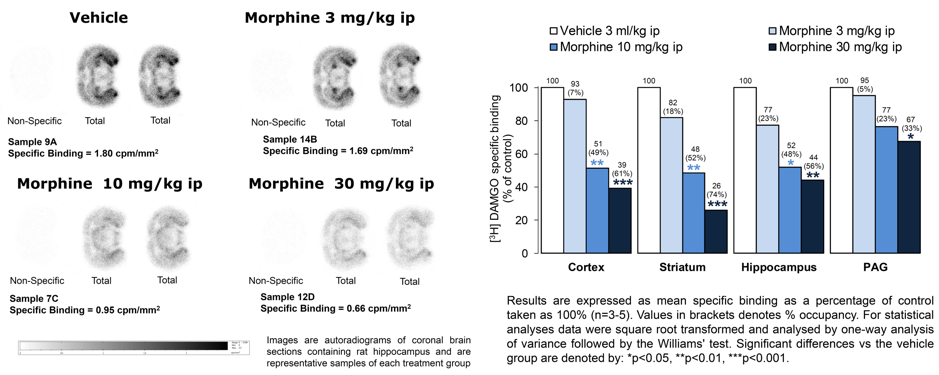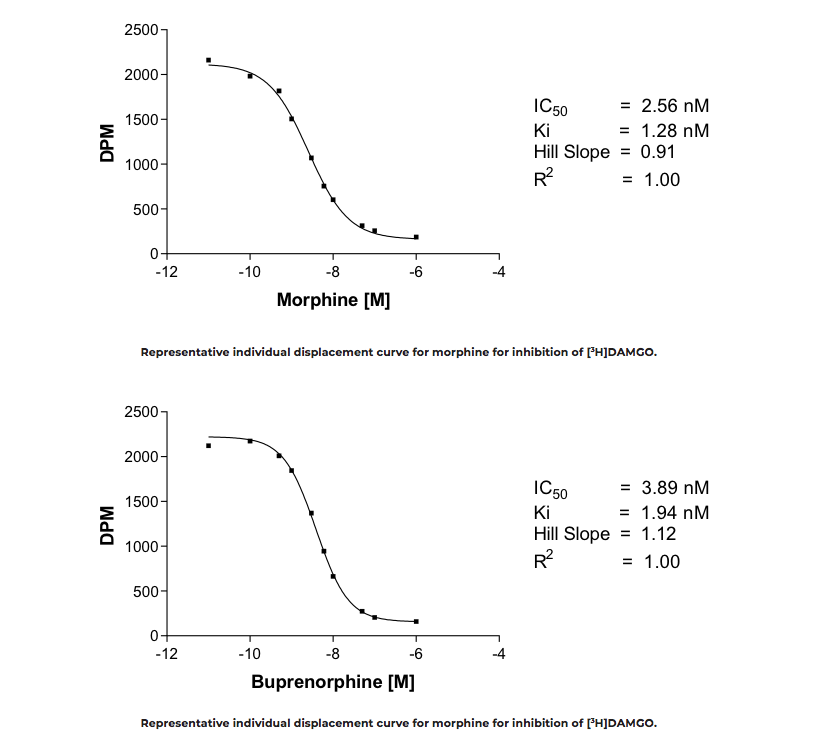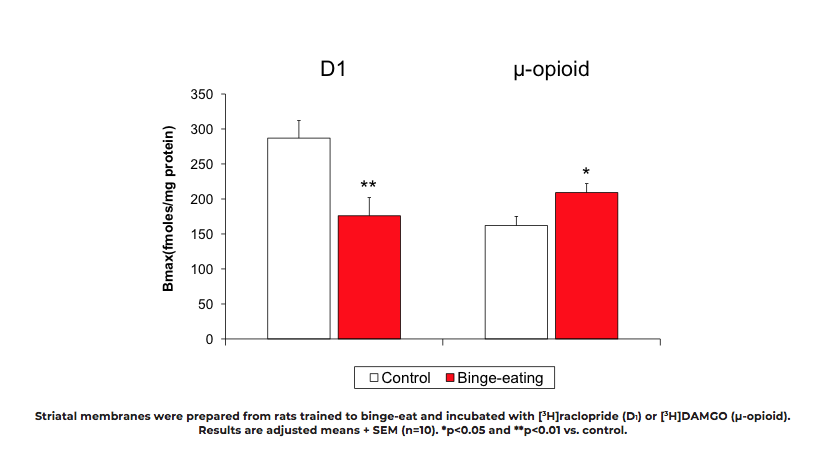Receptor Binding
Ex vivo Receptor Occupancy and In Vitro Radioligand Binding
Ex vivo receptor occupancy is a powerful technique utilised in drug discovery to demonstrate target engagement of centrally penetrant compounds. In addition, it can be used to profile binding sites associated with adverse side-effects.
At Sygnature ex vivo receptor occupancy studies can be undertaken with DMPK and/or behavioural profiling thus providing an invaluable link between in vitro activity, drug exposure at the site of interest, and in vivo efficacy. These studies can be used to determine:
- Central receptor occupancy for a range of drug doses.
- Occupancy in different brain regions in the same animal.
- Occupancy at a range of targets in the same animal.
- Time-course of occupancy.
[3H]DAMGO Ex Vivo Autoradiography in Various Rat Brain Regions 60 Minutes

Our dedicated team of experts have been conducting in vitro receptor binding assays and ex vivo occupancy studies for more than 20 years. We have the expertise to design bespoke studies to meet clients’ precise needs by developing novel assays using custom-synthesised radioligands. Alternatively, we can provide off the shelf assays using commercially available radioligands ([3H] and [125I]) for well-characterised neurotransmitter receptors and uptake sites including:

In vitro Receptor Binding Assays
Radioligand receptor binding assays are extremely powerful tools for studying receptors and to characterize the binding of a drug to its target receptor, providing an important contribution to drug screening and development programmes. There are three types of in vitro radioligand binding assays: competition, saturation and kinetic, all of which can be performed at Sygnature either in recombinant cell lines or using native tissue from rat and mouse brains (either in membrane preparations or in tissue slices).
Competition Studies: Affinity of morphine and buprenorphine for µ-opioid Receptors

Saturation Analysis: Kd and Bmax
Saturation analysis can be performed to understand receptor density (Bmax) and the equilibrium dissociation constant (Kd), and their relationship to a pharmacodynamic endpoint. For example, binge-eating is associated with decreased D1 receptor density and increased μ-opioid receptor density in the striatum.

Functional Studies
Sygnature also has the expertise to undertake functional pharmacological activity assays by assessing receptor function using [35S] GTPgammaS binding or by measuring uptake into rat and mouse synaptosomes.
